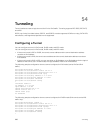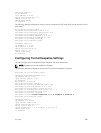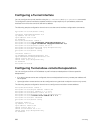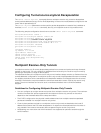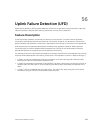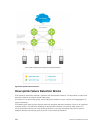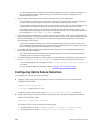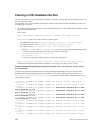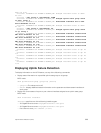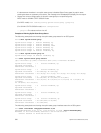56
Uplink Failure Detection (UFD)
Uplink failure detection (UFD) provides detection of the loss of upstream connectivity and, if used with
network interface controller (NIC) teaming, automatic recovery from a failed link.
Feature Description
A switch provides upstream connectivity for devices, such as servers. If a switch loses its upstream
connectivity, downstream devices also lose their connectivity. However, the devices do not receive a
direct indication that upstream connectivity is lost because connectivity to the switch is still operational
UFD allows a switch to associate downstream interfaces with upstream interfaces. When upstream
connectivity fails, the switch disables the downstream links. Failures on the downstream links allow
downstream devices to recognize the loss of upstream connectivity.
For example, as shown in the following illustration, Switches S1 and S2 both have upstream connectivity
to Router R1 and downstream connectivity to the server. UFD operation is shown in Steps A through C:
• In Step A, the server configuration uses the connection to S1 as the primary path. Network traffic
flows from the server to S1 and then upstream to R1.
• In Step B, the upstream link between S1 and R1 fails. The server continues to use the link to S1 for its
network traffic, but the traffic is not successfully switched through S1 because the upstream link is
down.
• In Step C, UFD on S1 disables the link to the server. The server then stops using the link to S1 and
switches to using its link to S2 to send traffic upstream to R1.
Uplink Failure Detection (UFD)
903




